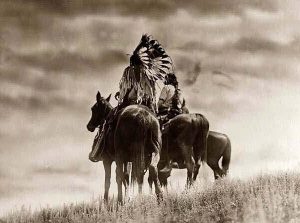The Cheyenne tribe is a Native American Indian tribe. In Cheyenne Native Americans History that considered to be one of the most well known Indian tribes that have inhabited the North American landscape, well before a host of European colonizers have arrived and conquered the Americas.

Facts about the Cheyenne Native Americans History
The Cheyenne Indians originally lived in stationary villages in the eastern parts of the country. They settled on what is now called as Minnesota. They are known to be a tribe to be well versed in the art of creating alliances, as these enabled them to improve their ways such as their livelihood, ethics, and had diversified their culture in a positive note. With this, they have allied with the Sioux and the Arapaho Indian tribes. In the early 1800s, they migrated to the high plains as a result of the overpowering White Americans, forcing them to flee their ancestral lands, which are far more bountiful than the high plains in terms of vegetation. This caused the newer generation of Indians to grow hatred to the white Caucasian population.
Division of Cheyenne
This had also caused the division of their tribe into the Northern Cheyenne and Southern Cheyenne. This division encompasses the Missouri River to the Arkansas River. In the Cheyenne Native Americans History the Cheyenne Indians were known to be a proud tribe, for they valued the very essence of freedom and liberty. They do not bow down to anyone, not even their chieftains. They treat their chieftains in a way which is different from what modern society has, despite the latter’s superiority in rank. To them, improving and maintaining the relationship that they have with Mother Nature is one of the best practices that they can practice.
They were also known to be horseback riders, using their wit and skill in horsemanship to hunt buffalos. They depend heavily on buffalos as they use it for various kinds of livelihood uses, such as for clothing, shelter, food, and even as a symbol to show their manhood. However, before the Spaniards came, they just hunted on foot. Note that the Spaniards were the once who brought horses to the Americas. This proves that the arrival of the Spaniards wasn’t all about abuse and extortion because, on the bright side, it helped them to improve their standards of living.
They were living inside tepees, as they migrated together with the herds of buffalos. According to Cheyenne Native Americans History, Cheyenne men were known to be brave providers of livelihood, while the women were virtuous keepers of the family that supported the men at all costs. They relied heavily on the buffalo because this provided them the food, tools, weapons, and even clothing. However, through the passing of time, these people learned to use buckskin for their clothing which was softer and more comfortable to wear than the buffalo skin.

Tribal rituals were also their thing. If there are events, accomplishments, or life rituals such as marriage and death, they held ceremonies to honor and to celebrate whatever there is to have. One example of their rituals is the smoking of the peace pipe. The men were the ones who practiced this during routine custom at council meetings. Another example of their rituals that have been passed from one generation to another is storytelling. Storytelling is very important as this preserved their past for future generations to understand their history and genealogy.
Cheyenne tribe language
The Cheyenne Indians speak a bit of the Algonquian language, as their language is part of this. As of now, there are still a lot of Cheyenne descendants that speak this. One of the biggest challenges that the Cheyenne Indians have experienced was during the Gold Rush, where they were forced off their land to live on Indian reservation camps.
The Northern Cheyennes are now living today in their reservation in Montana, while the Southern Cheyenne tribesmen are now residing in Oklahoma. Clinton, Oklahoma is the Cultural Center of the Cheyenne Indians.
Cheyenne tribe weapons, Cheyenne tribe religion, Cheyenne tribe art, Cheyenne tribe arts and crafts, Cheyenne tribe map, Cheyenne Indian names
